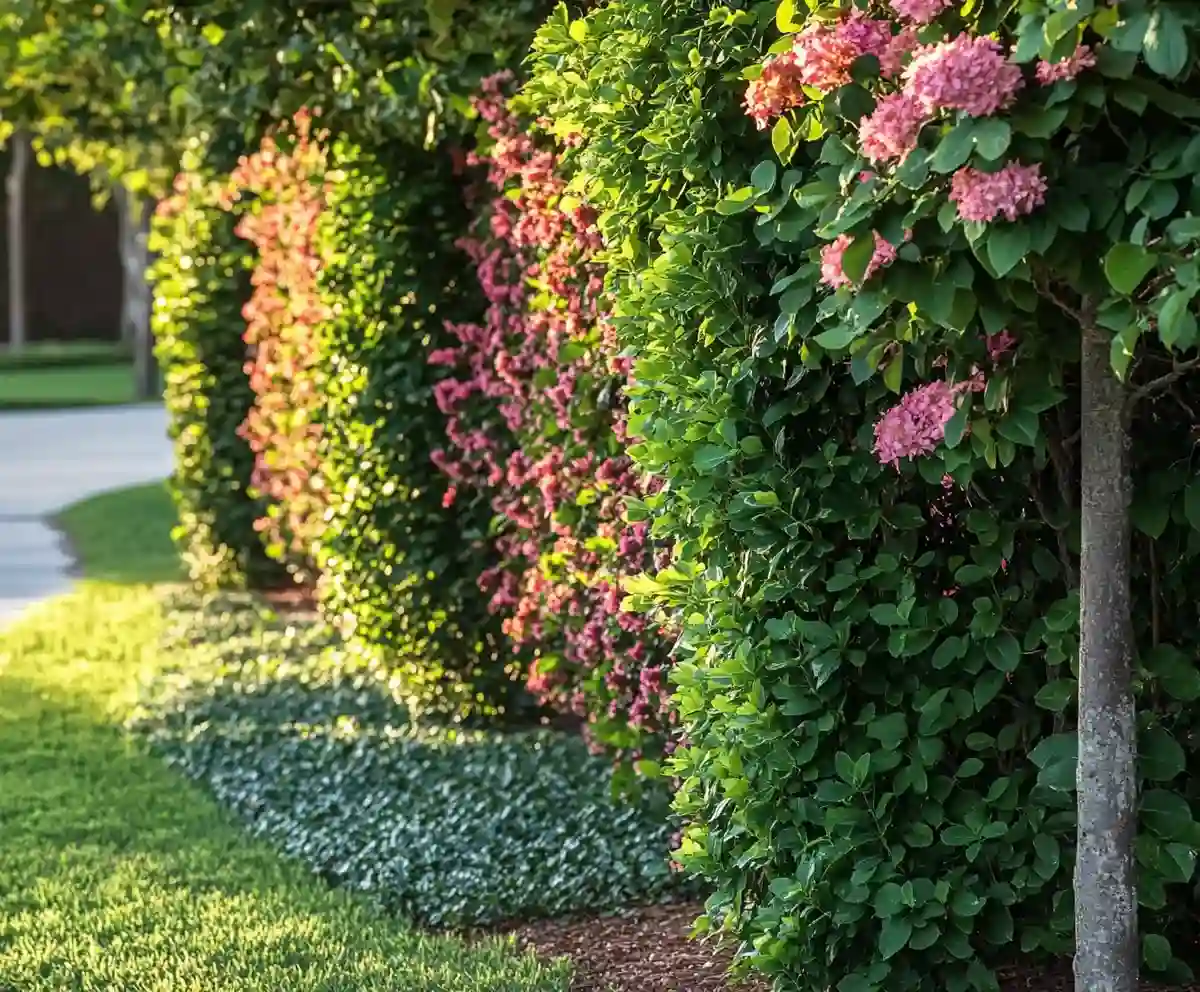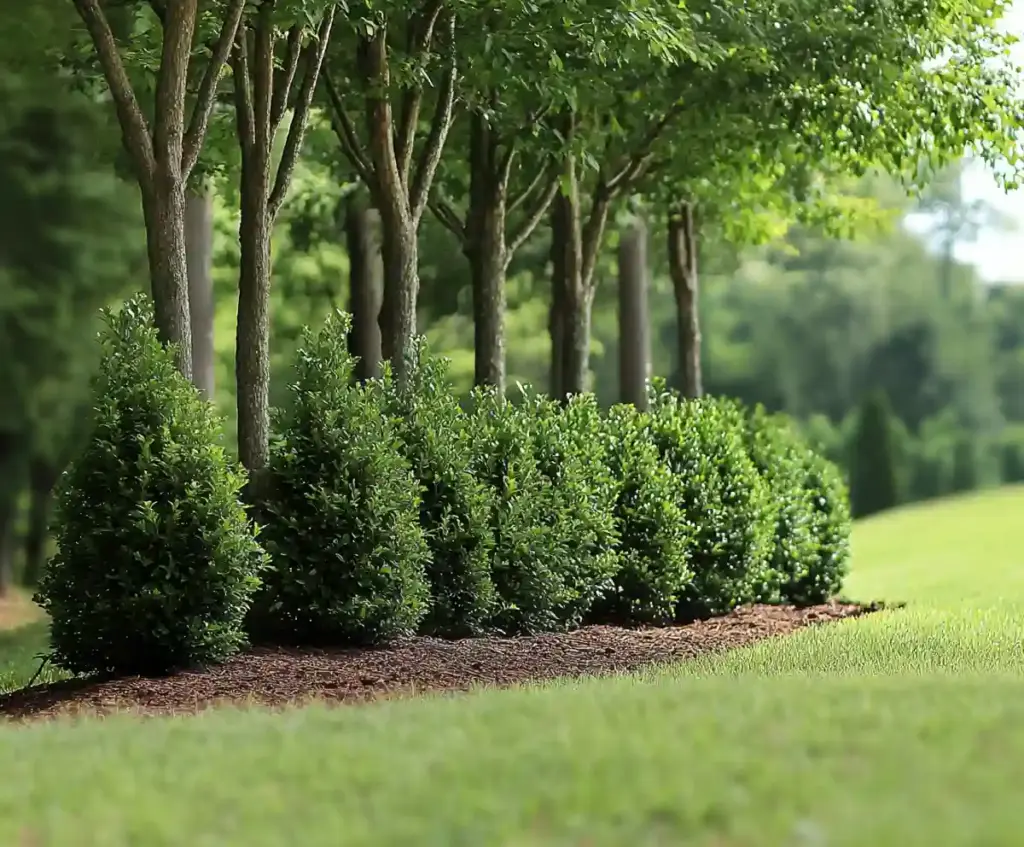Looking to add a touch of green serenity and boost your backyard’s privacy? Choosing the right plants for fence line privacy can do wonders—not only shielding your space from nosy neighbors but also enhancing the beauty, texture, and mood of your outdoor area. Whether you dream of a fast-growing hedge, a flowery wall, or a lush tropical screen, there’s a perfect plant to match your vision.
In this guide, we’ll walk you through the most beautiful and practical plant choices to create a natural privacy screen along your fence line. From evergreens and flowering shrubs to vines and grasses, each option offers a unique blend of function and charm. Plus, we’ll give you tips on care, climate compatibility, and how to mix varieties for year-round appeal.
🌲 Fast-Growing Trees for Fence Line Privacy
If you’re eager to block out the view fast, these towering trees are your best bet. They’re ideal for large yards, windy areas, or anyone craving an instant green wall. Here are three reliable and beautiful choices:
1. Leyland Cypress
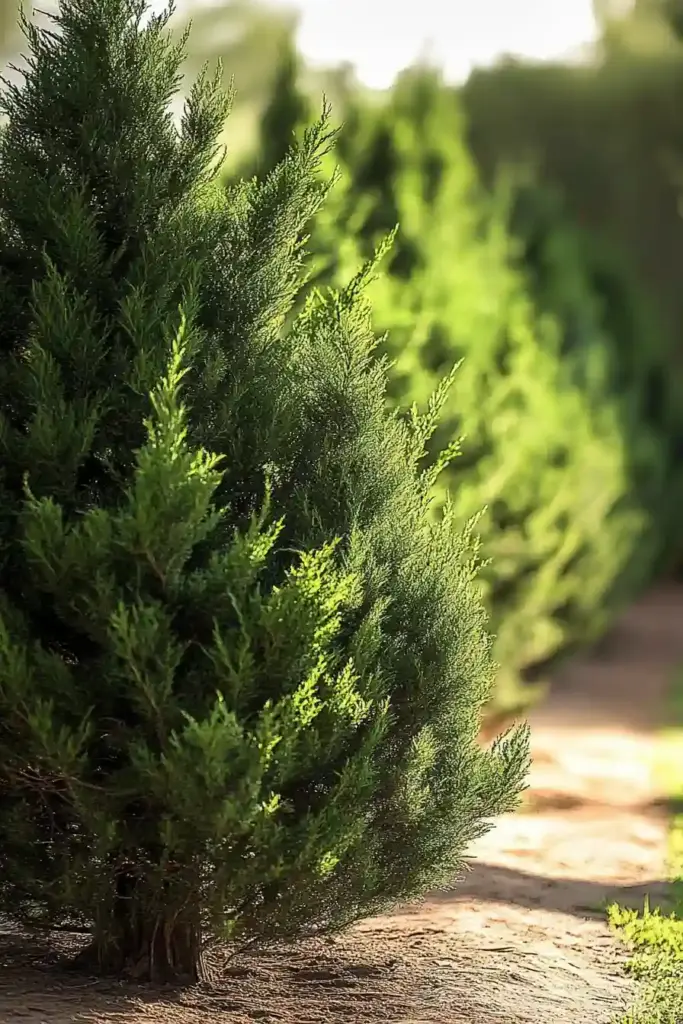
A favorite among privacy seekers, Leyland Cypress is known for its dense foliage and impressive growth rate.
- Why It Works: With soft, feathery needles and a tidy, uniform shape, this evergreen offers an elegant yet effective screen. It’s also resilient in urban settings.
- Growth Rate: 3–4 feet per year
- Height at Maturity: 60–70 feet
- Best For: Full sun to partial shade; USDA Zones 6–10
- Care Tips: Water regularly during the first year; prune annually to maintain shape
- Watch Out For: Susceptible to bagworms and fungal diseases like canker
2. Green Giant Arborvitae
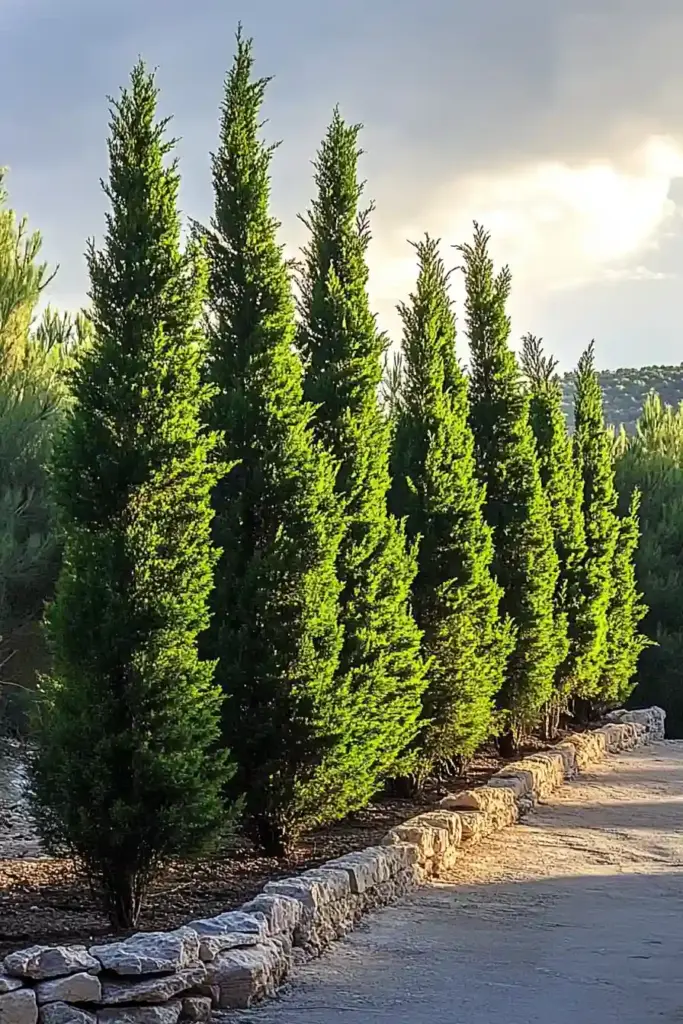
For a low-maintenance, deer-resistant solution, Green Giant Arborvitae checks all the boxes.
- Why It Works: Its lush, pyramidal form offers year-round privacy without the bronzing many evergreens show in winter.
- Growth Rate: 3–5 feet per year
- Height at Maturity: 50–60 feet
- Best For: USDA Zones 5–7, full to partial sun
- Care Tips: Needs minimal pruning; thrives in loamy, well-drained soil
- Watch Out For: Struggles in poorly draining, heavy clay soils
3. Italian Cypress
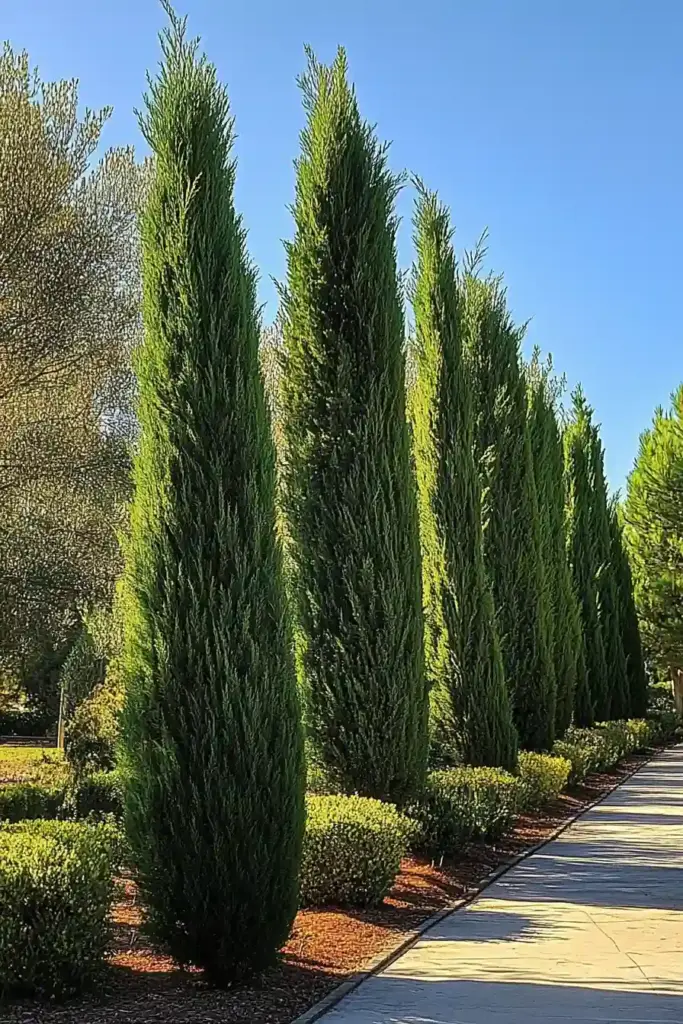
Want something a little more stylish? Italian Cypress is the vertical stunner your fence line deserves.
- Why It Works: Its slim, architectural shape makes it perfect for tight spaces where you still want height and elegance.
- Growth Rate: 2–3 feet per year
- Height at Maturity: 40–60 feet
- Best For: Mediterranean-style gardens; USDA Zones 7–10
- Care Tips: Loves full sun and dry conditions; make sure the soil drains well
- Watch Out For: Can suffer damage from heavy snow or ice buildup
These fast-growing trees set the foundation for a bold and beautiful privacy barrier. Whether you’re going for classic or contemporary, they’re a great start.
🌸 Flowering Privacy Plants
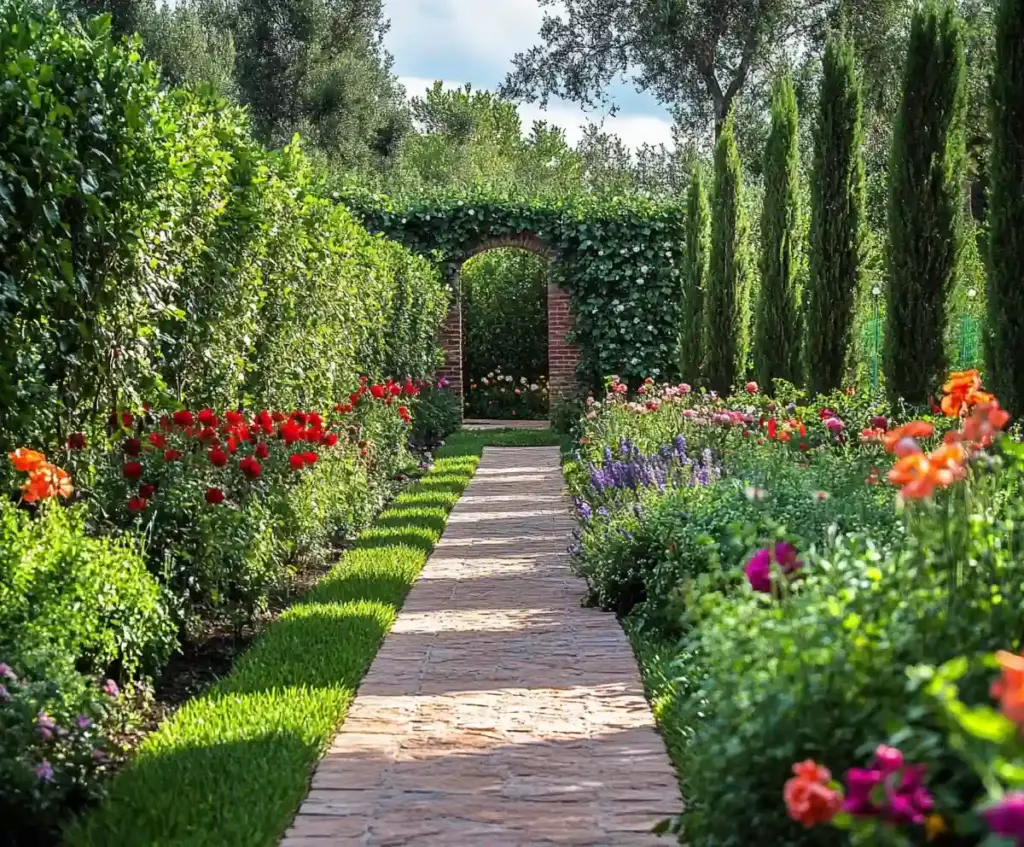
Who says privacy can’t be pretty? These flowering plants add a romantic, seasonal touch to your fence line while still delivering the visual coverage you need. Ideal for gardeners who crave color and fragrance.
4. Climbing Roses
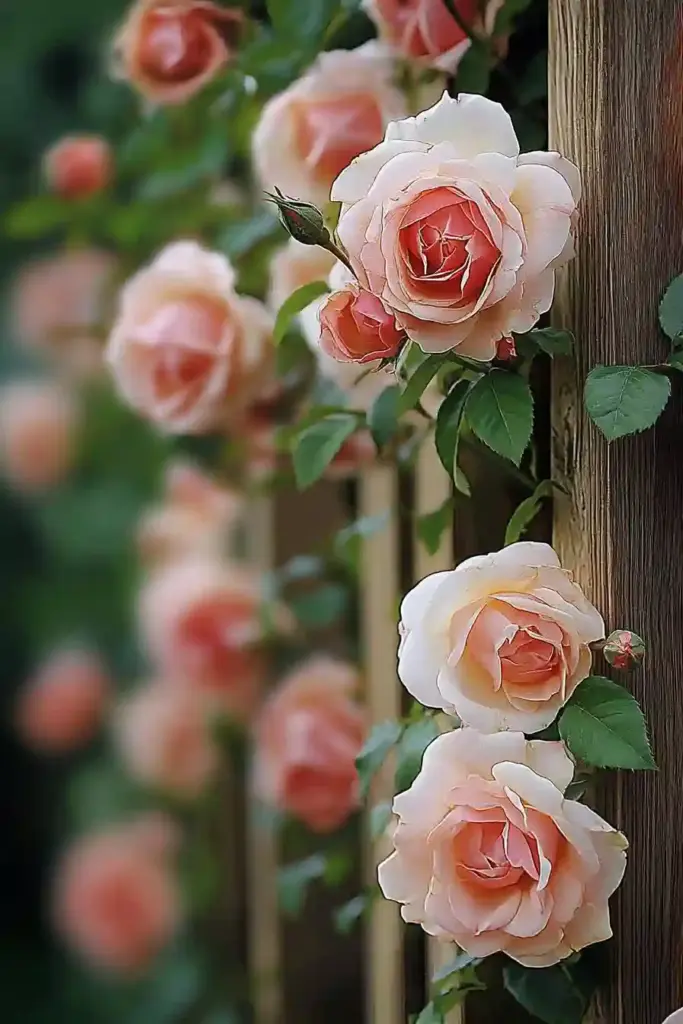
Nothing says “charming garden” like roses—especially when they’re climbing up a fence or trellis.
- Why It Works: Climbing roses give you vertical interest, fragrant blooms, and plenty of privacy when trained along a fence or arch.
- Growth Rate: 2–3 feet per year
- Height at Maturity: 12–20 feet
- Best For: Full sun; USDA Zones 5–9
- Care Tips: Prune annually, feed regularly, and remove spent flowers to encourage reblooming
- Watch Out For: Common rose issues like black spot and powdery mildew—plant in areas with good air circulation
5. Flowering Dogwood
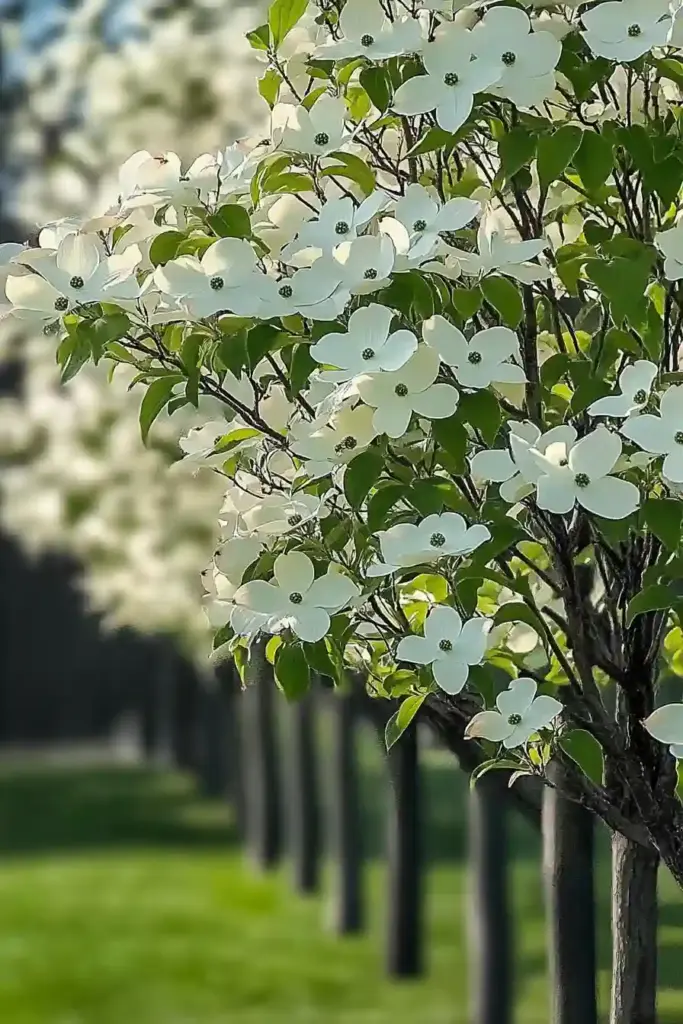
A native beauty, Flowering Dogwood brings four-season charm: blossoms in spring, lush leaves in summer, red foliage in fall, and berries in winter.
- Why It Works: It offers moderate coverage with a more naturalistic feel—perfect for softening a fence line.
- Growth Rate: 1–2 feet per year
- Height at Maturity: 15–25 feet
- Best For: Partial shade to full sun; USDA Zones 5–9
- Care Tips: Prefers rich, acidic soil and benefits from regular watering and mulch
- Watch Out For: Prone to anthracnose if not properly spaced or in overly damp conditions
6. Crepe Myrtle
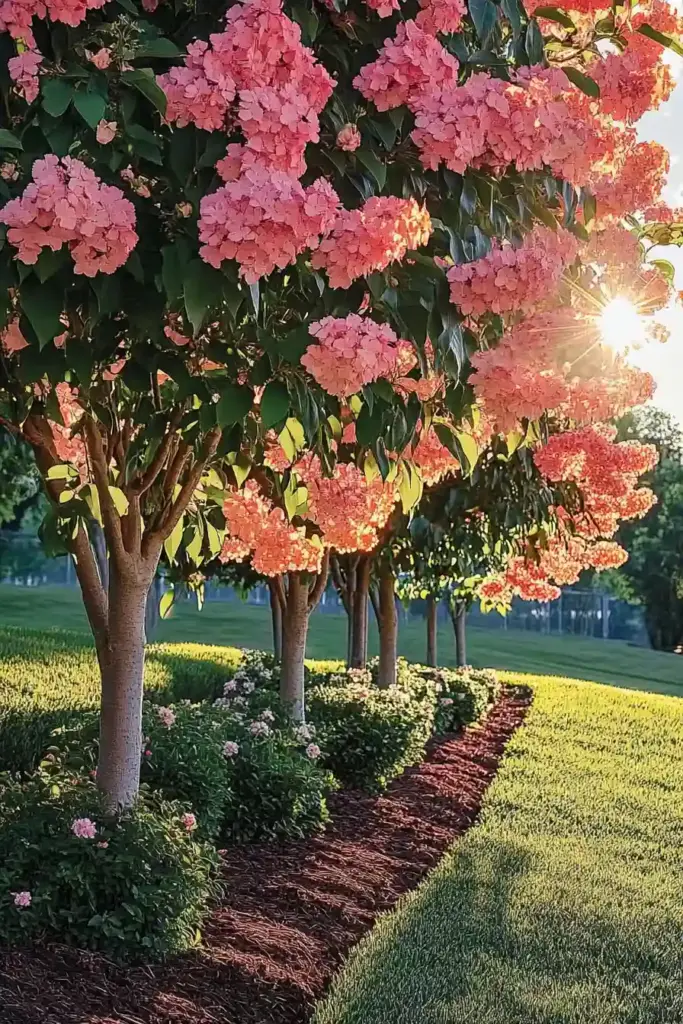
Looking for a tree that blooms for months and still gives you privacy? Enter the crepe myrtle.
- Why It Works: With long-lasting blooms in vibrant colors, peeling bark for winter interest, and thick foliage, it’s both functional and decorative.
- Growth Rate: 2–3 feet per year
- Height at Maturity: 15–25 feet
- Best For: Full sun; USDA Zones 6–10
- Care Tips: Prune in late winter or early spring; choose mildew-resistant varieties if you live in a humid area
- Watch Out For: Powdery mildew and over-pruning (avoid “crepe murder” by cutting back properly!)
Flowering plants bring joy and color to your privacy efforts, turning your fence line into a blooming boundary. They’re especially great when mixed with evergreens for year-round interest.
🌲 Evergreen Shrubs for Year-Round Fence Line Privacy
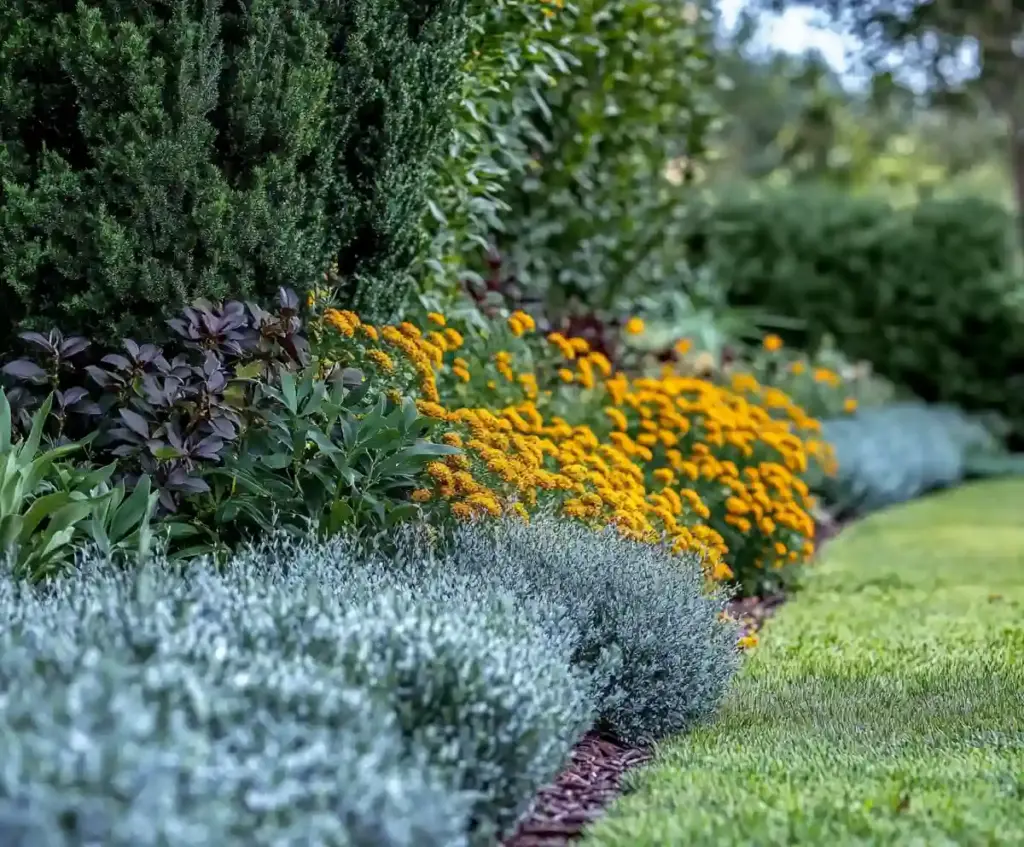
If you want a privacy screen that never takes a break, evergreen shrubs are your go-to. They’re dense, adaptable, and offer a clean, classic look—whether you want a formal hedge or a natural backdrop.
7. Skip Laurel (Cherry Laurel)
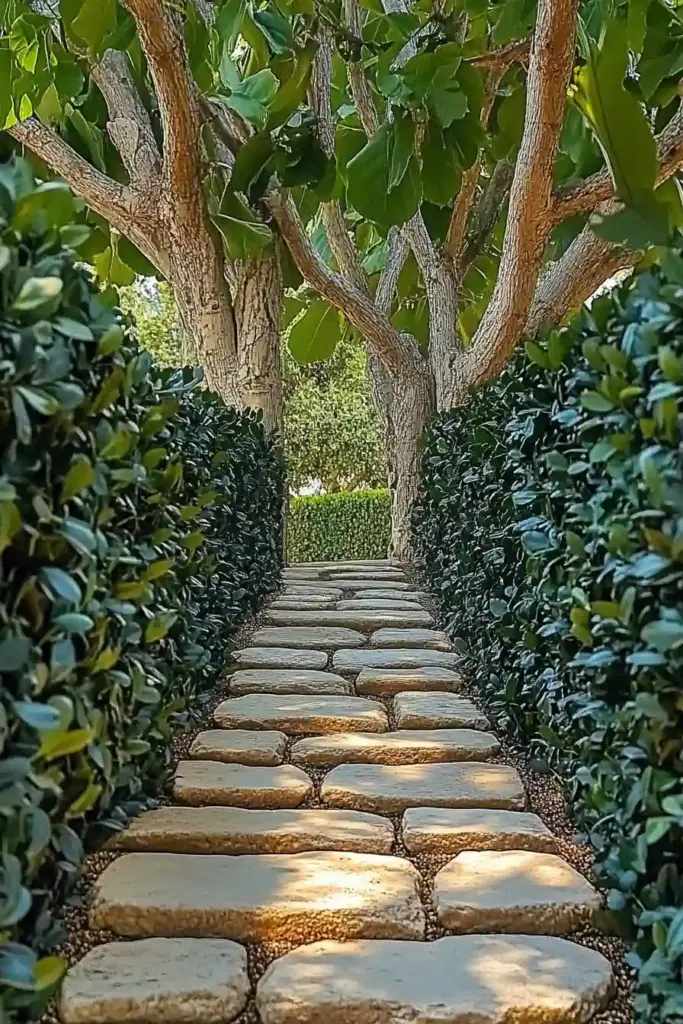
Skip Laurel combines beauty with toughness, making it ideal for creating structured hedges that hold their shape all year long.
- Why It Works: Dense growth and shiny, dark green leaves provide instant visual coverage—great for sound buffering, too.
- Growth Rate: 1–2 feet per year
- Height at Maturity: 10–18 feet
- Best For: Full sun to full shade; USDA Zones 6–9
- Care Tips: Water regularly during establishment; prune after flowering to shape
- Watch Out For: Poor airflow can lead to leaf spot issues—space plants appropriately
8. Emerald Green Arborvitae
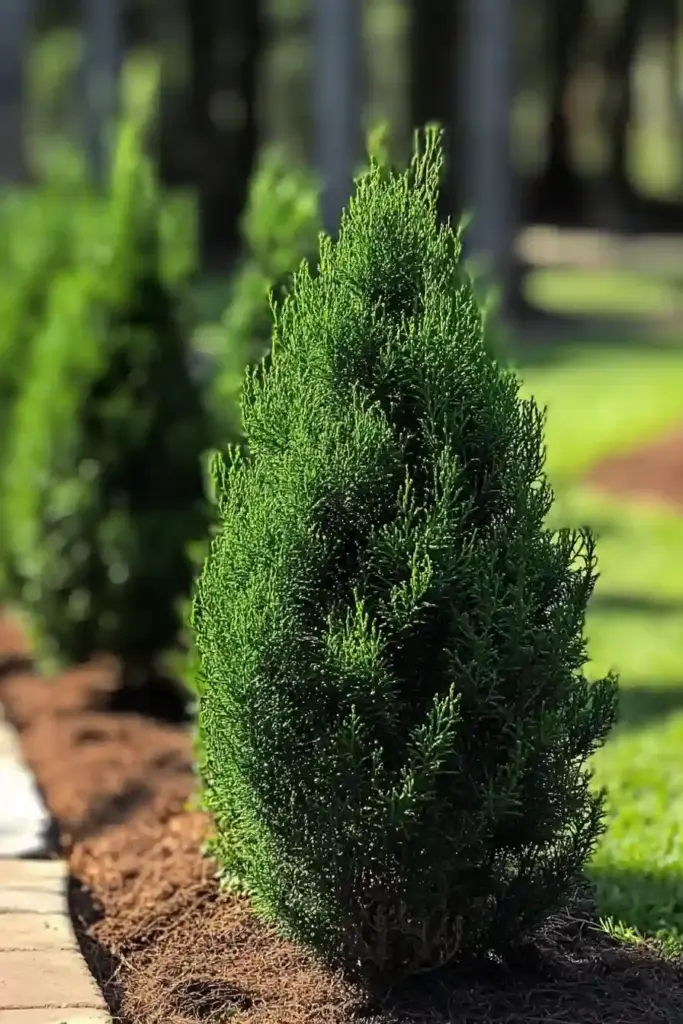
Perfect for smaller yards, this compact evergreen stays tidy and requires minimal upkeep.
- Why It Works: Its slim shape and bright green foliage make it an excellent option for tight spaces where privacy is still a priority.
- Growth Rate: 1–2 feet per year
- Height at Maturity: 12–14 feet
- Best For: Full sun; USDA Zones 2–7
- Care Tips: Mulch to protect roots; shield from harsh winter winds
- Watch Out For: Winter burn and deer—especially in colder zones
9. Holly
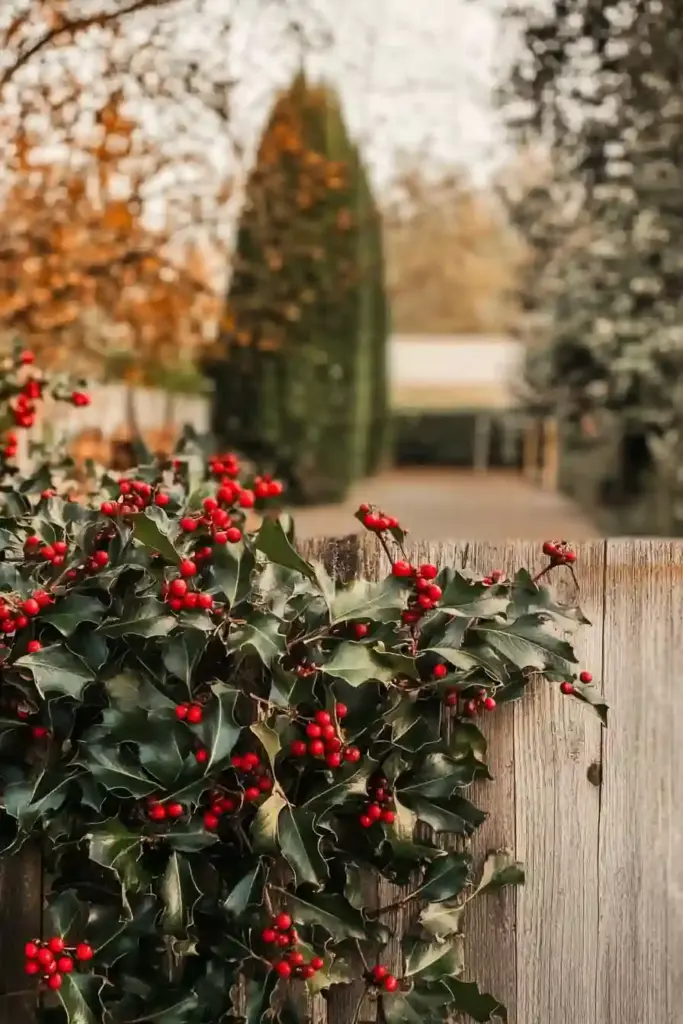
A classic choice for privacy and protection, holly shrubs are known for their glossy leaves and festive red berries.
- Why It Works: Holly not only offers dense coverage but also deters intruders with its prickly leaves. Plus, it provides habitat for birds.
- Growth Rate: 1–2 feet per year
- Height at Maturity: 15–40 feet
- Best For: Full sun to partial shade; USDA Zones 5–9
- Care Tips: Use acidic soil; prune to maintain size and shape
- Watch Out For: You’ll need both male and female plants for berry production
With evergreen shrubs, your fence line stays private and green no matter the season. Mix heights and textures for a more dynamic, layered look.
🎍 Bamboo Varieties for Fast and Stylish Fence Line Privacy
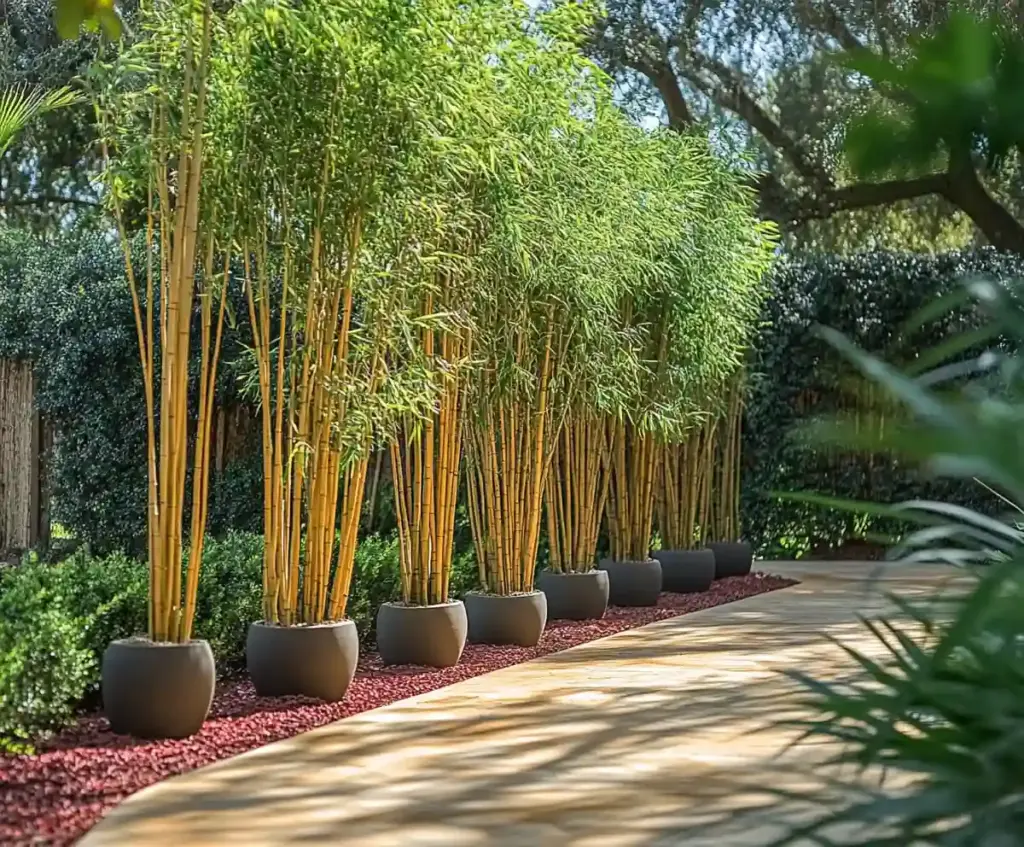
Bamboo offers a lush, tropical feel and rapid growth that makes it ideal for quick privacy. But it’s important to choose the right type—some varieties can spread aggressively if not properly managed.
10. Clumping Bamboo
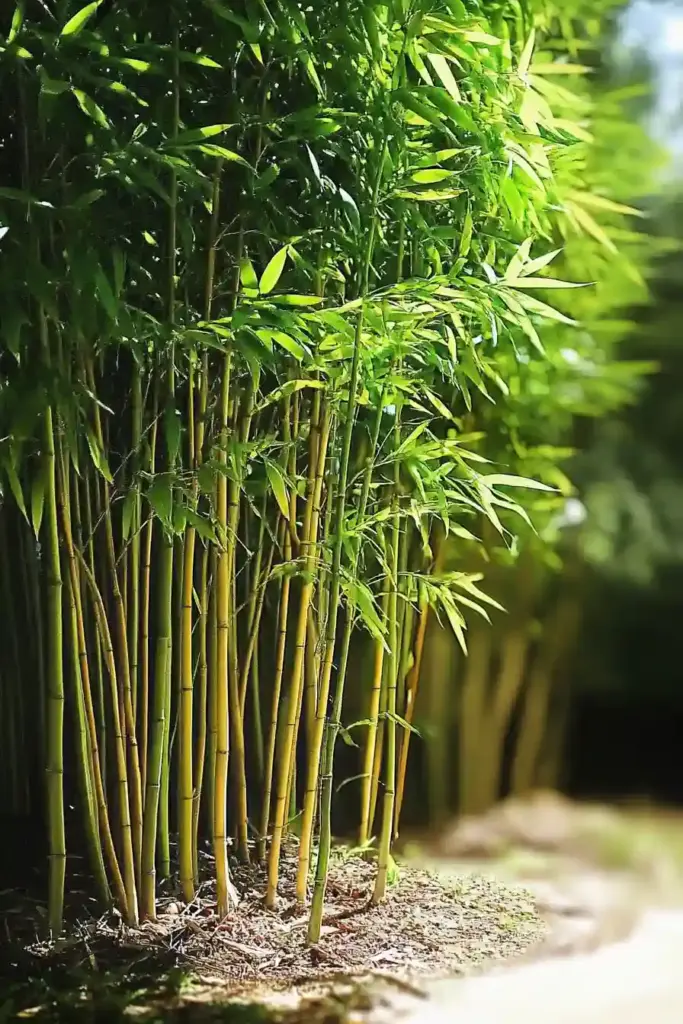
Unlike its notorious cousin (running bamboo), clumping bamboo grows in well-behaved clusters that stay where you plant them.
- Why It Works: Its upright growth and graceful leaves make it a stylish option for privacy that’s easy to maintain.
- Growth Rate: 3–5 feet per year
- Height at Maturity: 10–20 feet
- Best For: Full sun to partial shade; USDA Zones 5–9
- Care Tips: Water regularly and feed with organic mulch or compost to encourage lush growth
- Watch Out For: Divide clumps every few years to maintain shape and prevent overcrowding
11. Golden Bamboo
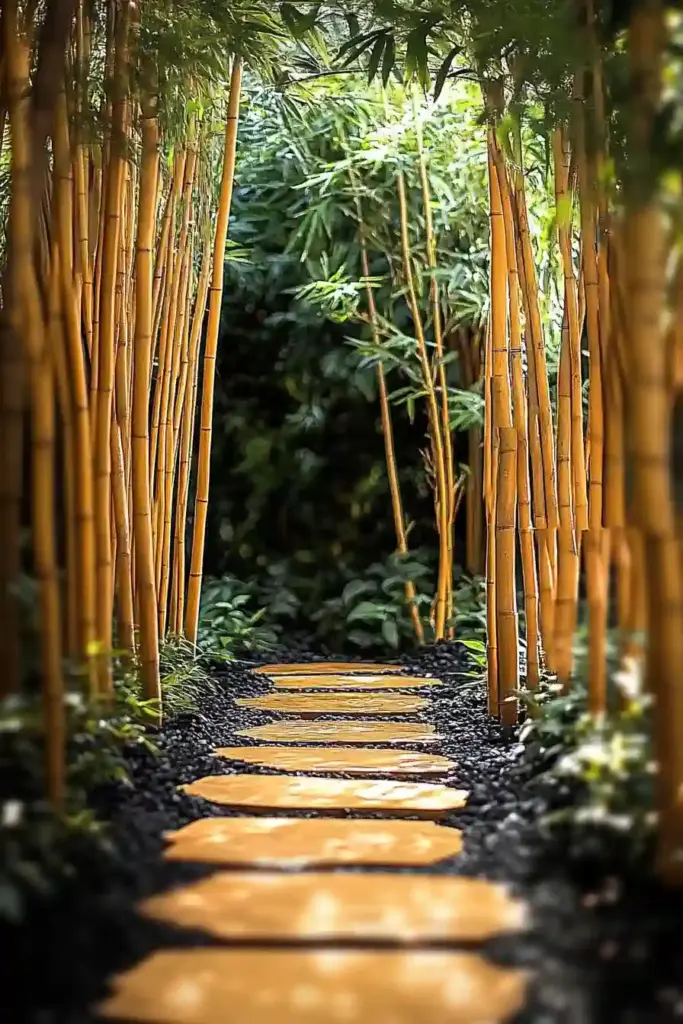
If you want instant impact, golden bamboo delivers. Just be mindful—it can spread fast without a root barrier.
- Why It Works: The golden-yellow canes are striking against green foliage, offering a bold and beautiful privacy wall.
- Growth Rate: 3–5 feet per year
- Height at Maturity: 30–40 feet
- Best For: Full sun to partial shade; USDA Zones 6–10
- Care Tips: Install a root barrier to control spread; keep soil moist during dry periods
- Watch Out For: This variety is considered invasive in some regions—check local guidelines before planting
Bamboo can completely transform your fence line, creating a serene, secluded retreat—just be sure to manage it wisely. It’s especially striking in modern landscapes or zen-style gardens.
🌾 Ornamental Grasses for Fence Line Privacy with Movement and Texture

Ornamental grasses are often overlooked in privacy planning, but they’re powerful allies—fast-growing, resilient, and elegant. Plus, they play nicely with other plants in mixed borders.
12. Pampas Grass

Pampas grass brings the drama with towering plumes that sway gracefully in the breeze.
- Why It Works: Its tall height and feathery flower heads create a soft, flowing barrier that feels both wild and refined.
- Growth Rate: Reaches full size in 2–3 years
- Height at Maturity: 8–13 feet
- Best For: Full sun; USDA Zones 7–11
- Care Tips: Cut back to the ground in late winter or early spring; plant in well-drained soil
- Watch Out For: Can become invasive in some areas—check local regulations
13. Maiden Grass (Miscanthus sinensis)
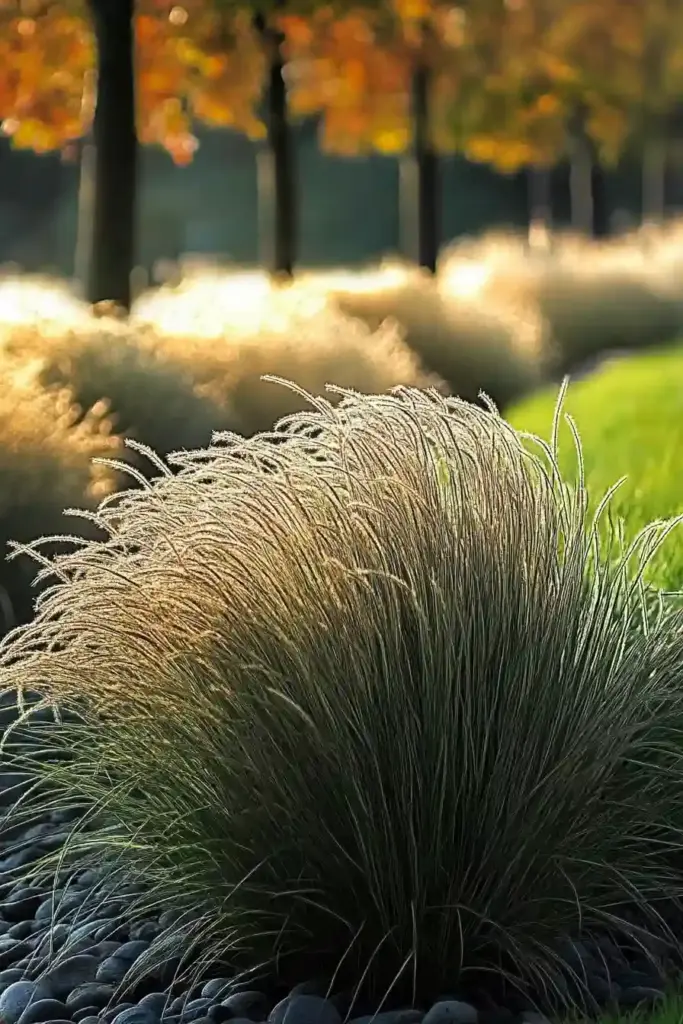
Maiden Grass is a graceful option with arching blades and silvery plumes that shimmer in the light.
- Why It Works: Ideal for creating a soft screen in more natural or decorative landscapes, it also provides lovely winter interest.
- Growth Rate: Fast-establishing
- Height at Maturity: 5–8 feet
- Best For: Full sun; USDA Zones 5–9
- Care Tips: Cut back in early spring before new growth appears; divide every few years to maintain vigor
- Watch Out For: In rich soils or too much shade, the plant may flop—plant in well-drained, sunny spots
Ornamental grasses are an elegant and easy-care way to enhance fence line privacy while bringing movement and texture to your space. They also pair beautifully with flowering shrubs or evergreens for a multi-dimensional effect.
🌿 Vines and Climbers for Vertical Fence Line Privacy
Climbing plants are ideal for creating living walls of privacy. Whether you’re working with a trellis, arbor, or directly training vines on a fence, these choices add lush greenery and color from the ground up.
14. Boston Ivy
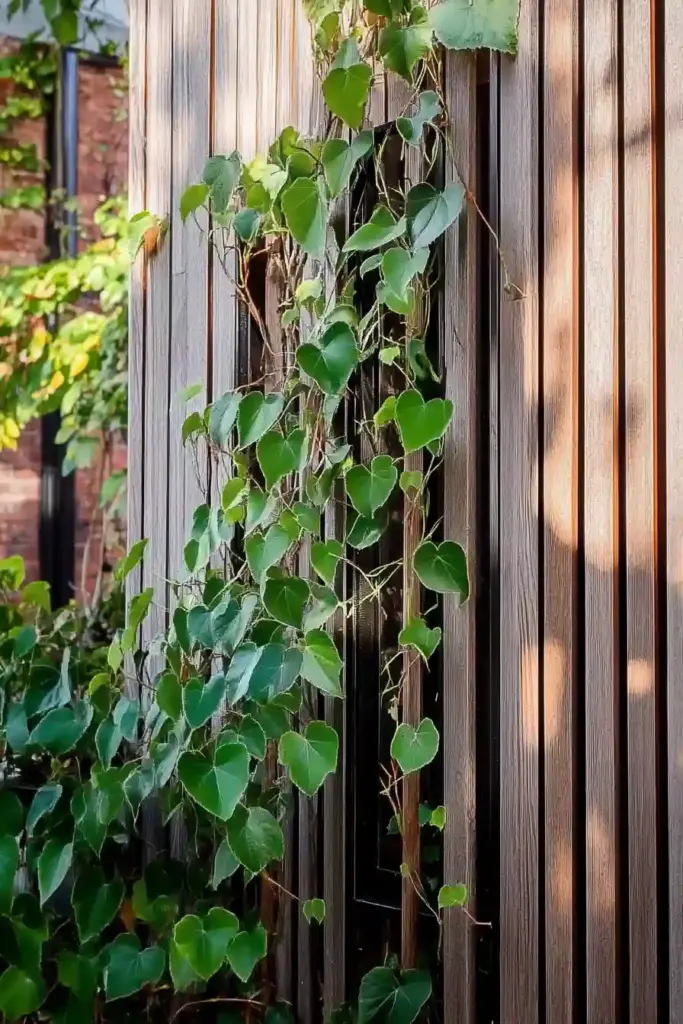
Boston Ivy is a fast-climbing vine that covers fences, walls, and trellises with rich green foliage that turns fiery red in fall.
- Why It Works: This self-clinging vine spreads quickly and fills in gaps beautifully, offering seasonal privacy with stunning autumn colors.
- Growth Rate: 3–10 feet per year
- Height at Maturity: 30–50 feet
- Best For: Full sun to full shade; USDA Zones 4–8
- Care Tips: Prune annually to control spread and shape; provide a strong support structure
- Watch Out For: Can damage old fences or buildings if not maintained—regular trimming is key
15. Clematis

Clematis brings elegance and flowers galore. With dozens of varieties blooming in different seasons and colors, it’s a flexible and beautiful choice.
- Why It Works: Perfect for adding colorful privacy to vertical structures like lattice or wire fencing. Many types are repeat bloomers!
- Growth Rate: 3–5 feet per year
- Height at Maturity: 8–20 feet
- Best For: Full sun with roots shaded; USDA Zones 4–9
- Care Tips: Plant in rich, well-drained soil; mulch to keep roots cool; prune based on variety
- Watch Out For: Susceptible to clematis wilt—avoid overwatering and prune affected stems
Vines are an excellent way to maximize vertical space and add softness, color, and seasonal charm to your fence line. Plus, they’re fantastic for small gardens where every square foot counts.
🌼 Mixed Privacy Options for a Dynamic, All-Season Fence Line
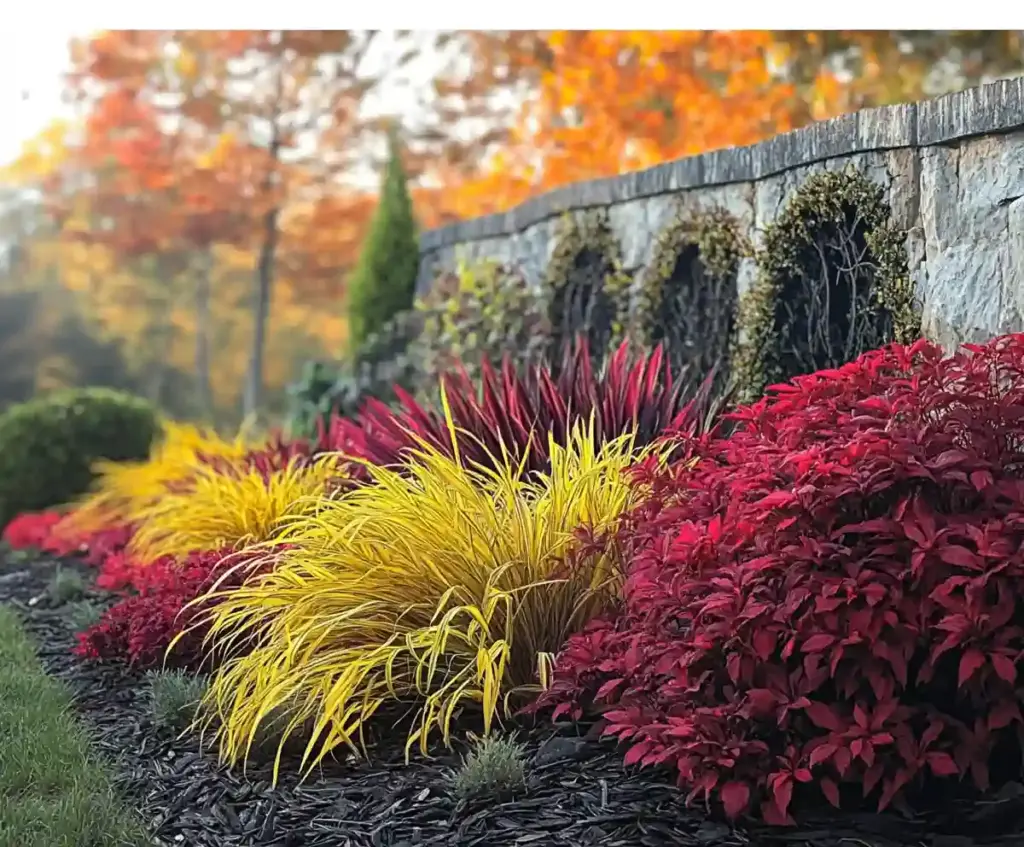
These shrubs and small trees provide texture, color, and structure. Use them to break up long fence lines, add variety, or complement evergreens and grasses for a layered, natural look.
16. Privet
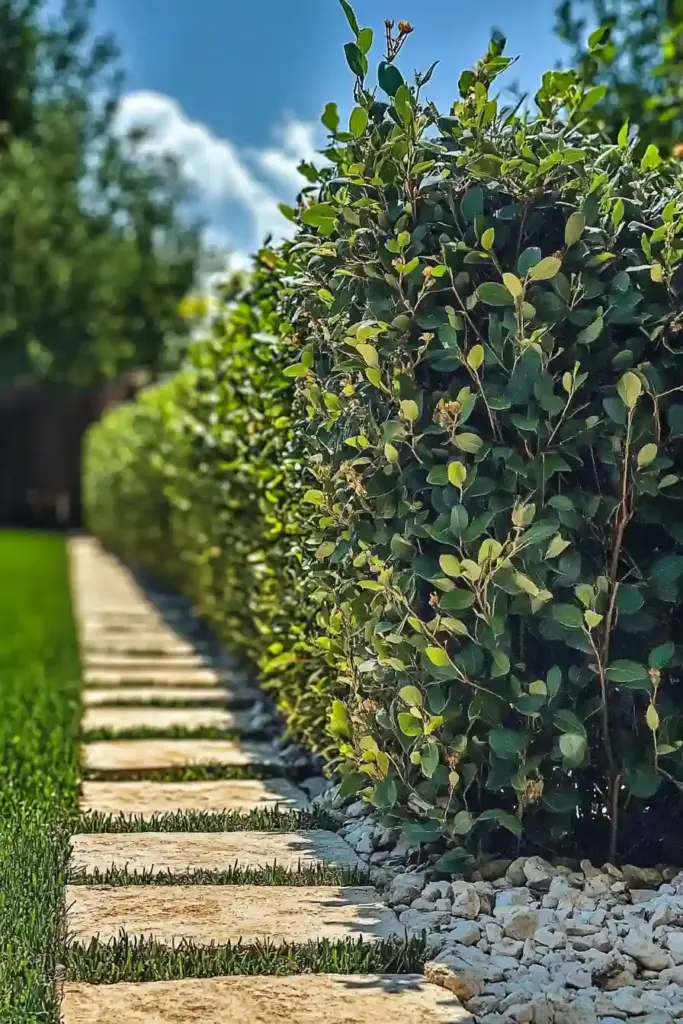
A tried-and-true hedge plant, privet offers dense coverage and can be easily shaped for a tidy, formal appearance.
- Why It Works: Quick-growing and very adaptable, privet is ideal for homeowners who want instant results and clean lines.
- Growth Rate: 2–3 feet per year
- Height at Maturity: 4–15 feet
- Best For: Full sun to partial shade; USDA Zones 5–8
- Care Tips: Prune regularly to maintain shape; water during dry spells
- Watch Out For: Some varieties can be invasive—opt for non-invasive cultivars
17. Viburnum
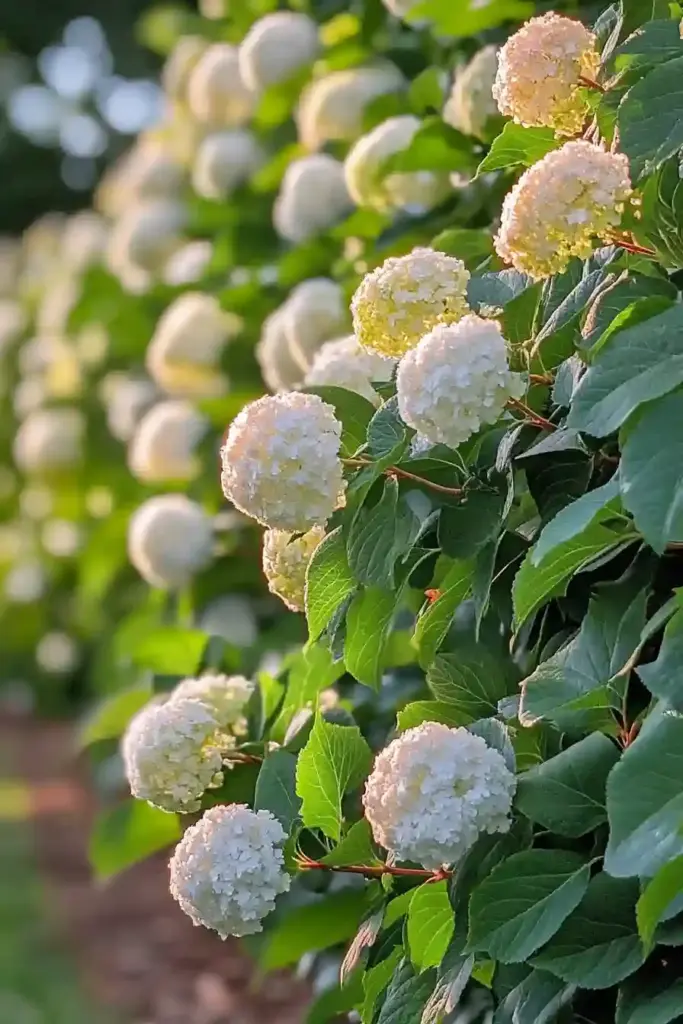
Viburnums are multi-talented shrubs offering fragrant flowers, attractive berries, and beautiful fall color.
- Why It Works: Great for informal hedges or mixed borders, viburnum creates privacy while also attracting birds and pollinators.
- Growth Rate: 1–2 feet per year
- Height at Maturity: 6–12 feet
- Best For: Partial to full sun; USDA Zones 4–8
- Care Tips: Needs moderate water and occasional pruning after flowering
- Watch Out For: Some types are prone to bacterial leaf spot—ensure good airflow
18. Red Twig Dogwood
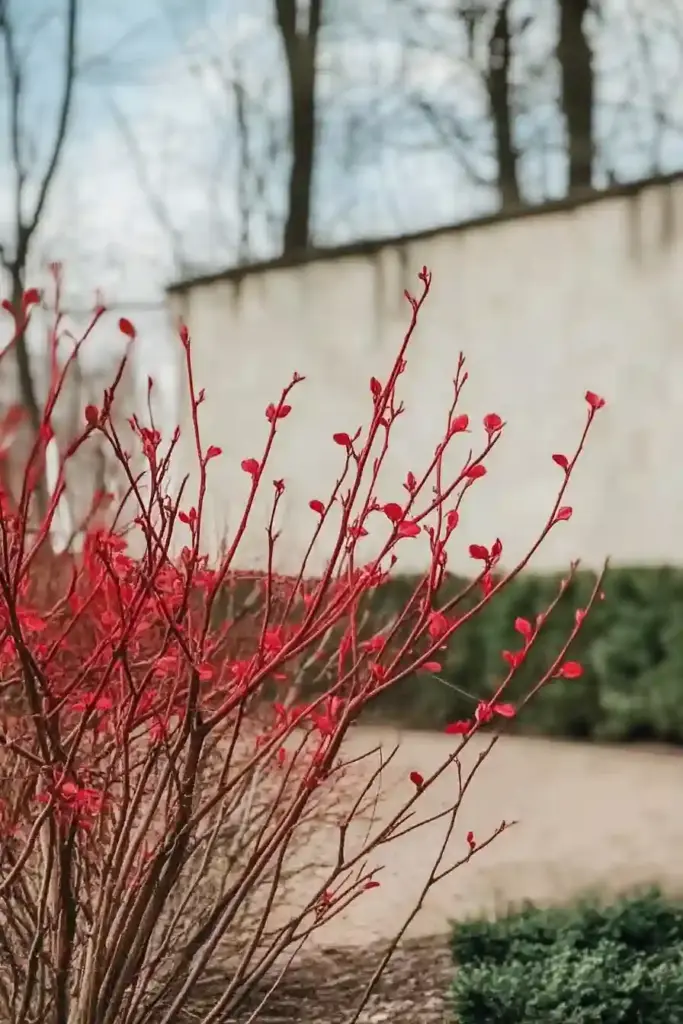
Known for its fiery red stems in winter, this dogwood variety is a showstopper even when it’s not in bloom.
- Why It Works: It adds year-round interest and works beautifully in naturalistic plantings.
- Growth Rate: 1–2 feet per year
- Height at Maturity: 6–9 feet
- Best For: Full sun to partial shade; USDA Zones 3–8
- Care Tips: Prune older stems to encourage new red growth; keep soil moist
- Watch Out For: Can spread via suckers—cut back if you want to control size
19. Forsythia
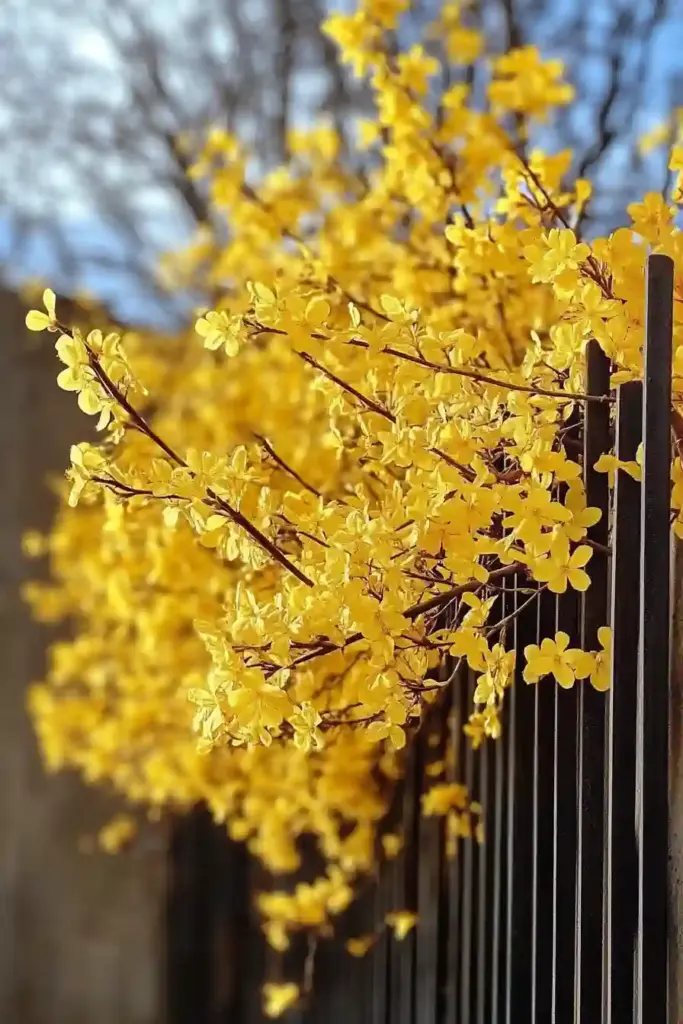
This early bloomer lights up the landscape with vibrant yellow flowers before its leaves even emerge.
- Why It Works: Fast-growing and cheerful, Forsythia is a great seasonal privacy option for informal gardens.
- Growth Rate: Around 2 feet per year
- Height at Maturity: 8–10 feet
- Best For: Full sun; USDA Zones 5–8
- Care Tips: Prune immediately after flowering; mulch to retain moisture
- Watch Out For: Flower buds are sensitive to late frosts—choose a sheltered spot if possible
20. Burning Bush (Euonymus alatus)
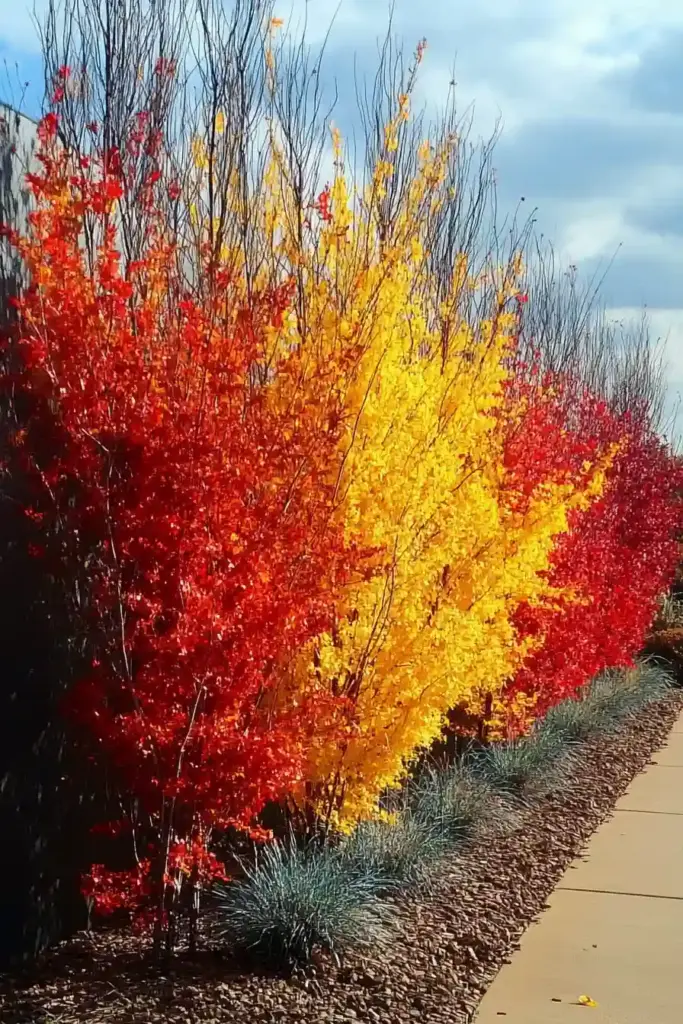
Famous for its electric red fall foliage, the burning bush adds a bold splash of color to any privacy hedge.
- Why It Works: A reliable backdrop most of the year, it truly shines in autumn and adds visual contrast to evergreens.
- Growth Rate: 1–2 feet per year
- Height at Maturity: 15–20 feet
- Best For: Sun to partial shade; USDA Zones 4–8
- Care Tips: Thrives in well-drained soil; prune for shape in early spring
- Watch Out For: Considered invasive in some states—check local regulations before planting
Mixing different types of privacy plants creates a more resilient, visually interesting, and wildlife-friendly fence line. You’ll enjoy blooms, berries, and beautiful foliage across all four seasons.
📋 Quick Reference Guide: Best Plants for Fence Line Privacy
Here’s a side-by-side look at the most popular privacy plants featured in this guide. Use this to narrow down your choices based on height, growth rate, and other essentials.
| Plant Name | Growth Rate | Mature Height | Sun Requirements | Best Use |
|---|---|---|---|---|
| Leyland Cypress | 3–4 ft/year | 60–70 ft | Full to partial sun | Dense evergreen screen |
| Green Giant Arborvitae | 3–5 ft/year | 50–60 ft | Full to partial sun | Deer-resistant, year-round privacy |
| Italian Cypress | 2–3 ft/year | 40–60 ft | Full sun | Narrow space, formal accents |
| Climbing Roses | 2–3 ft/year | 12–20 ft | Full sun | Flowering fences and trellises |
| Flowering Dogwood | 1–2 ft/year | 15–25 ft | Partial shade to full sun | Wildlife-friendly, ornamental |
| Crepe Myrtle | 2–3 ft/year | 15–25 ft | Full sun | Long-lasting blooms, summer screening |
| Skip Laurel | 1–2 ft/year | 10–18 ft | Full sun to full shade | Formal evergreen hedge |
| Emerald Green Arborvitae | 1–2 ft/year | 12–14 ft | Full sun | Compact evergreen for small yards |
| Holly | 1–2 ft/year | 15–40 ft | Full to partial sun | Security screen with berries |
| Clumping Bamboo | 3–5 ft/year | 10–20 ft | Full to partial sun | Tropical look, controlled growth |
| Golden Bamboo | 3–5 ft/year | 30–40 ft | Full to partial sun | Fast privacy, tropical feel |
| Pampas Grass | Full size in 2–3 yrs | 8–13 ft | Full sun | Dramatic, seasonal screening |
| Maiden Grass | Fast-establishing | 5–8 ft | Full sun | Soft movement, winter interest |
| Boston Ivy | 3–10 ft/year | 30–50 ft (climber) | Full sun to full shade | Wall coverage, fall color |
| Clematis | 3–5 ft/year | 8–20 ft (climber) | Full sun, shaded roots | Flowering trellis or vertical privacy |
| Privet | 2–3 ft/year | 4–15 ft | Full to partial sun | Fast, formal hedge |
| Viburnum | 1–2 ft/year | 6–12 ft | Partial to full sun | Berries, blooms, mixed borders |
| Red Twig Dogwood | 1–2 ft/year | 6–9 ft | Full to partial sun | Winter color, wet areas |
| Forsythia | ~2 ft/year | 8–10 ft | Full sun | Early spring blooms, informal hedges |
| Burning Bush | 1–2 ft/year | 15–20 ft | Sun to partial shade | Bold fall foliage, background planting |
This chart makes it easy to select the right plant based on your space, climate, and aesthetic goals. Keep it handy as you design your dream fence line!
🛠️ Caring for Your Privacy Plants: Simple Steps for Long-Term Success
A beautiful privacy hedge doesn’t happen by accident. The right care—especially during those crucial first seasons—makes all the difference in how well your plants grow, fill in, and stay healthy.
🌱 1. Water Deeply and Consistently
- During the first growing season, regular deep watering helps establish strong root systems.
- After that, most plants can handle moderate watering, especially if mulch is used to retain moisture.
- Tip: Drip irrigation or soaker hoses make watering efficient and hands-free.
✂️ 2. Prune with Purpose
- Annual pruning encourages thicker growth and helps control size and shape.
- For flowering plants, prune after blooming to avoid cutting off next season’s buds.
- Remove any dead, diseased, or damaged branches to keep plants healthy and tidy.
🌿 3. Feed for Growth
- Apply a slow-release fertilizer in early spring tailored to the type of plant (evergreen, flowering, etc.).
- Don’t over-fertilize—too much can lead to weak, leggy growth and attract pests.
🧼 4. Monitor for Pests & Diseases
- Keep an eye out for issues like leaf spot, mildew, aphids, or root rot.
- Good air circulation, proper spacing, and clean pruning tools can prevent most problems.
🍂 5. Mulch and Refresh Annually
- A 2–3 inch layer of mulch locks in moisture, stabilizes soil temperature, and suppresses weeds.
- Refresh mulch each spring and pull it back slightly from the plant base to prevent rot.
🌳 6. Space and Thin as Needed
- Overcrowded plants can compete for resources and are more prone to disease.
- Thin out dense areas every few years to promote airflow and keep your privacy screen looking full but healthy.
With these care practices, your fence line will stay vibrant, thick, and beautiful for years—giving you both the seclusion and aesthetic appeal you’re after.
🌎 Climate Considerations: Choose Plants That Thrive Where You Live
Your local conditions—like temperature swings, rainfall, soil type, and sunlight—play a major role in which privacy plants will perform best. Here’s how to make the right picks:
📍 1. Know Your USDA Hardiness Zone
- Each plant has a USDA zone range that tells you where it can survive the winter.
- Use the updated USDA Plant Hardiness Zone Map to find your zone.
- Choose plants that are hardy in your zone—or a little colder, for extra resilience.
💧 2. Consider Rainfall & Drainage
- Some plants (like Red Twig Dogwood or Viburnum) do great in moist soil, while others (like Italian Cypress or Bamboo) prefer well-drained areas.
- If you have heavy clay soil or poor drainage, amend with compost or raised beds.
☀️ 3. Match Sunlight Requirements
- Check each plant’s preference: full sun (6+ hours), partial sun (3–6 hours), or full shade (<3 hours).
- Plant sun-lovers like Pampas Grass or Crepe Myrtle in open spots, and shade-tolerant options like Skip Laurel in more protected areas.
📐 4. Think About Space & Maintenance
- Fast-growing trees like Leyland Cypress are great for quick coverage but need room to spread.
- If you have a small yard or want low-maintenance options, compact evergreens or ornamental grasses might be a better fit.
🔁 5. Mix and Match for Year-Round Interest
- Combine evergreen shrubs with seasonal bloomers or colorful foliage plants for variety and year-round coverage.
- This also helps diversify your planting—so one pest or disease won’t wipe out your whole privacy screen.
Taking time to understand your local climate and site conditions will save you from poor performance (and plant replacement headaches!). A thoughtful plan = thriving plants and beautiful, lasting privacy.
✅ Conclusion: Build a Backyard Retreat with the Right Privacy Plants
Creating a beautiful, private outdoor space isn’t just about blocking views—it’s about building an atmosphere. Whether you choose fast-growing trees, elegant flowering shrubs, low-maintenance grasses, or a mix of all, the key is matching your plants to your space, climate, and style preferences.
Start with a solid plan, give your plants a healthy start, and maintain them with a little seasonal care. Before you know it, your fence line will be a lush, natural barrier that gives you peace, seclusion, and plenty of curb appeal.
Happy planting! 🌸🪴

